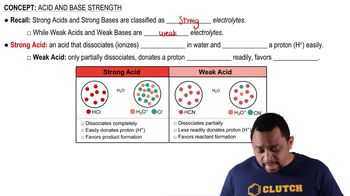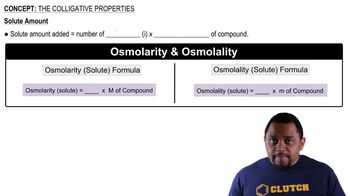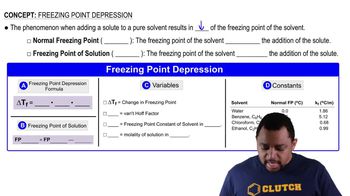Here are the essential concepts you must grasp in order to answer the question correctly.
Dissociation of Acids
Dissociation refers to the process by which an acid separates into its constituent ions in solution. In the case of trichloroacetic acid, it partially dissociates into hydrogen ions (H⁺) and trichloroacetate ions (CCl₃CO₂⁻). Understanding the extent of dissociation is crucial for calculating the concentration of ions in solution, which directly affects properties like freezing point.
Recommended video:
Acid and Base Strength Concept 1
Colligative Properties
Colligative properties are physical properties of solutions that depend on the number of solute particles rather than their identity. Freezing point depression is one such property, where the presence of solute particles lowers the freezing point of a solvent. The formula for freezing point depression indicates that for each mole of solute particles, the freezing point decreases by a specific amount, which is essential for solving the given problem.
Recommended video:
The Colligative Properties Concept 3
Freezing Point Depression Calculation
To calculate the freezing point depression, one must determine the total number of solute particles in the solution. For trichloroacetic acid, 36.0% dissociation means that from 1.00 mol of acid, 0.36 mol dissociates into 0.36 mol of H⁺ and 0.36 mol of CCl₃CO₂⁻, resulting in a total of 0.72 mol of particles. This total is then used in the freezing point depression formula to find the new freezing point of the solution.
Recommended video:
Freezing Point Depression Concept 1
 Verified step by step guidance
Verified step by step guidance Verified video answer for a similar problem:
Verified video answer for a similar problem:



 2:m
2:m